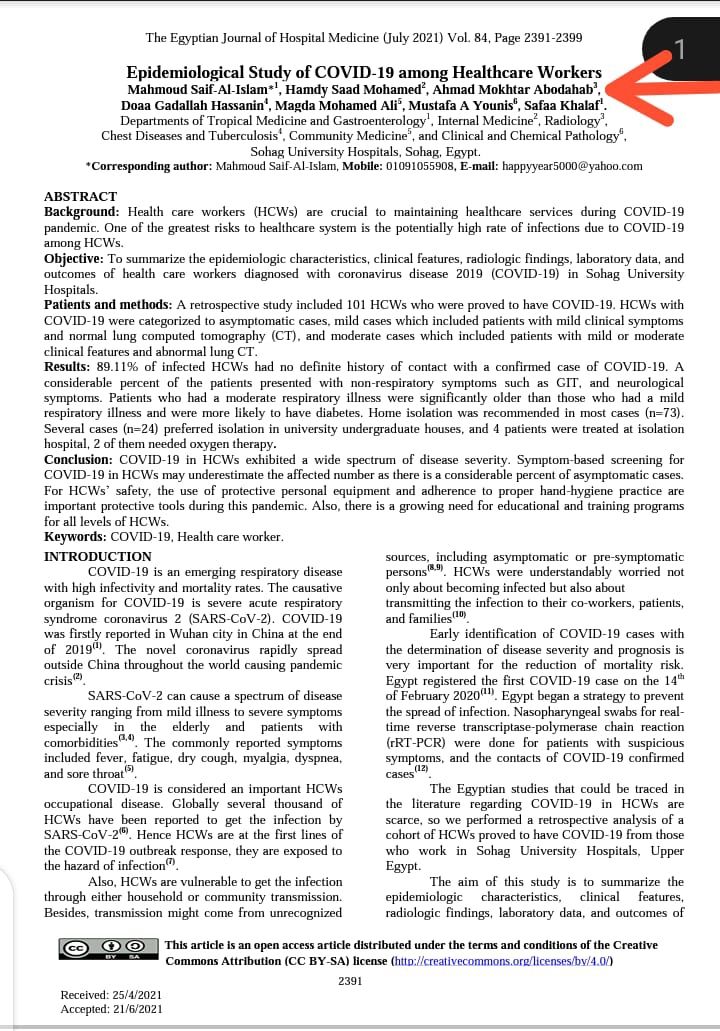ABSTRACT
Background: Health care workers (HCWs) are crucial to maintaining healthcare services during COVID-19
pandemic. One of the greatest risks to healthcare system is the potentially high rate of infections due to COVID -19
among HCWs.
Objective: To summarize the epidemiologic characteristics, clinical features, radiologic findings, laboratory data, and
outcomes of health care workers diagnosed with coronavirus disease 2019 (COVID-19) in Sohag University
Hospitals.
Patients and methods: A retrospective study included 101 HCWs who were proved to have COVID-19. HCWs with
COVID-19 were categorized to asymptomatic cases, mild cases which included patients with mild clinical symptoms
and normal lung computed tomography (CT), and moderate cases which included patients with mild or moderate
clinical features and abnormal lung CT.
Results: 89.11% of infected HCWs had no definite history of contact with a confirmed case of COVID-19. A
considerable percent of the patients presented with non-respiratory symptoms such as GIT, and neurological
symptoms. Patients who had a moderate respiratory illness were significantly older than those who had a mild
respiratory illness and were more likely to have diabetes. Home isolation was recommended in most cases (n=73).
Several cases (n=24) preferred isolation in university undergraduate houses, and 4 patients were treated at isolation
hospital, 2 of them needed oxygen therapy.
Conclusion: COVID-19 in HCWs exhibited a wide spectrum of disease severity. Symptom-based screening for
COVID-19 in HCWs may underestimate the affected number as there is a considerable percent of asymptomatic cases.
For HCWs’ safety, the use of protective personal equipment and adherence to proper hand-hygiene practice are
important protective tools during this pandemic. Also, there is a growing need for educational and training programs
for all levels of HCWs.
Keywords: COVID-19, Health care worker.


